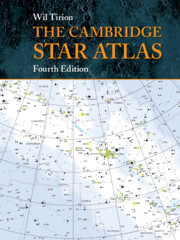Summary
Looking up at the night sky you will probably see a disorderly, scattered arrangement of stars, but anyone who observes more frequently will start to see that the stars do not change places in relation to each other. Long ago, people began giving names to these fixed groupings of stars, and today we refer to these groups as constellations. Most people recognize one or two constellations; for example, they probably know what the Big Dipper (or Plough), a part of the Great Bear constellation, looks like. But why is it always in a different position in the sky? And why can't you find Orion during a night in June or July? This changing aspect of the sky is often confusing to the casual stargazer. So, the first thing you have to learn is how the sky moves.
It is important to know that the star patterns themselves do not change, at least not in a single human life span. It is only over a period of centuries that the positions of some neighboring stars change in a way that can be detected with the unaided eye. All these groupings of stars and constellations can be regarded as being fixed to a huge imaginary sphere, with the Earth placed in the center. No matter where on Earth you are, you can always see just one half of this sphere.
- Type
- Chapter
- Information
- The Cambridge Star Atlas , pp. 8 - 19Publisher: Cambridge University PressPrint publication year: 2011



